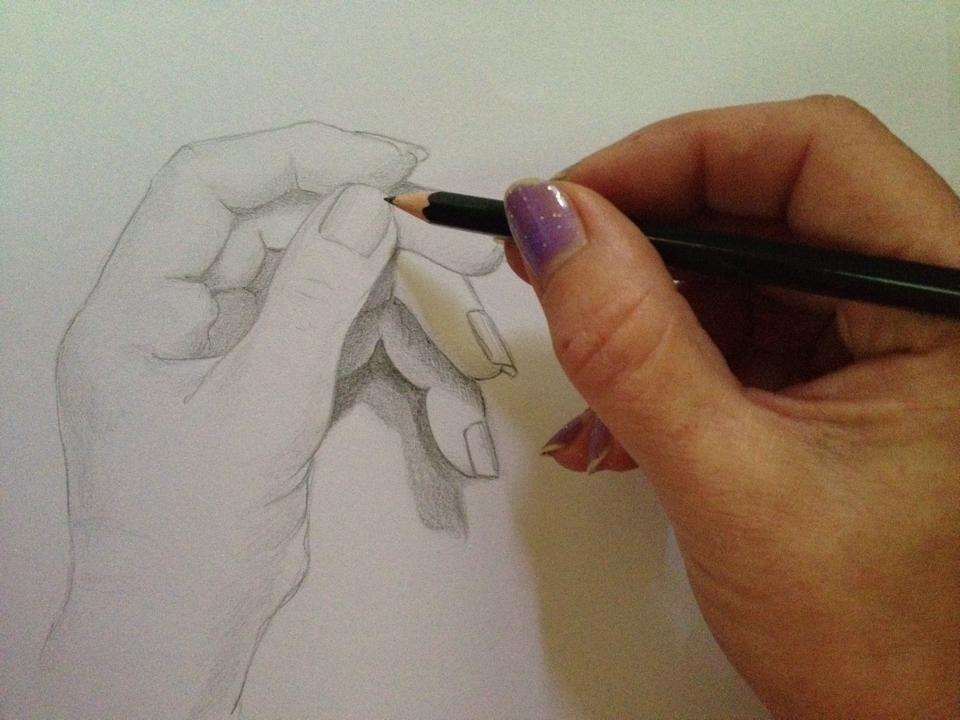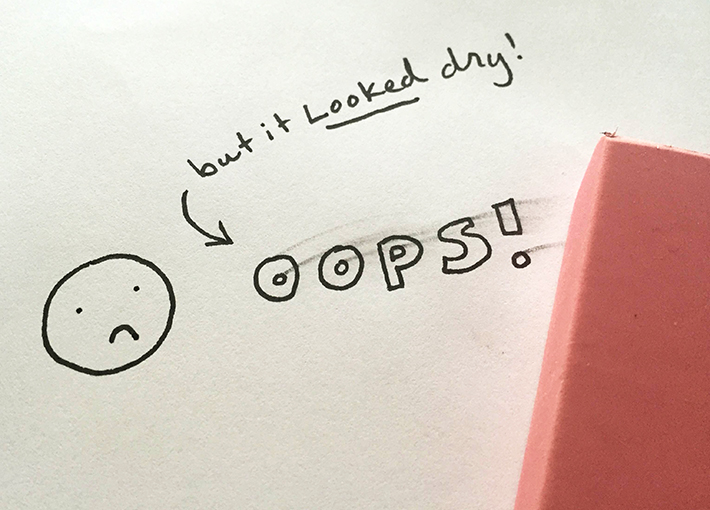Not to scare you, but it’s possible that you are making drawing mistakes without even knowing it.
Creating a drawing is about more than just your skill level and chosen medium. Your environment, media choices and even your choice in moisturizer (really!) can affect how your drawing comes out.
Here, we’ve detailed some of the potential ways you might be accidentally sabotaging your artwork, so that you can avoid issues and focus on the art.
Mistake #1: You forgot to wash your hands.
No, we’re not getting all Miss Manners on you. Sure, it’s a good idea to wash your hands frequently in everyday life as a general rule, but there’s a particularly strong case for it when you’re making a drawing.
Oils from your hands and fingers, whether naturally occurring, from moisturizer or from foods handled throughout the day, can affect the texture of your paper and how the ink or pencil lies on it, in some cases preventing the ink or graphite from fully adhering to the paper.
Here’s how to avoid it:
Give your hands a quick wash (and thorough dry) before you get started on your next piece of art. Better safe than sorry!

Photos via CakeSpy unless otherwise noted
Mistake #2: Your work surface is too cluttered.
Once again, I’m not telling you how to live your life. But I am telling you that if you keep your work surface jammed with all sorts of stuff, sooner or later, you’re going to spill something unwanted on your drawing. It’s never a good feeling when you accidentally spill coffee on top of your nearly finished piece of art.
Here’s how to avoid it:
Keep a clean work surface with minimal clutter that can cause harm to your drawing.
Mistake #3: You’re not considering the weather.
It’s true: The weather can absolutely affect your drawing. For example, if you live in a humid climate, the moist air can make your drawing paper more porous, which can make it feel slightly limp and affect how it absorbs ink. This can cause pen and ink drawings to bleed more, and the softer texture makes pencil marks score the paper more.
Here’s how to avoid it:
Store your paper in a cool, dry, place — consider getting a dehumidifier for your work space if it is very humid where you live. Or, use my personal trick…
When the weather is extremely humid, I briefly blow a hair dryer about 6-10 inches above the paper to dry it out a little bit before proceeding.
Mistake #4: You’re combining the wrong media.
While there is no pen, pencil, eraser or paper type that is “wrong” for drawing, there are certain combinations that can make it more difficult than is necessary. For instance, if you want to use a delicate nib pen for your drawing, a textured watercolor paper won’t be the best pairing (the nib can snag and tear the paper). This isn’t conducive to making your best art!
Here’s how to avoid it:
Consider how the media you have chosen (pen, pencil, paper, etc.) will work together before you start drawing. If in doubt, test a small area using the combination you’ve chosen to see how they work together.

My left hand via Craftsy member kel.rob1000000749674999
Mistake #5: You’re heavy handed with your drawing medium.
Watch that pressure! When you are heavy handed with your pencil or pen while sketching, your marks can actually indent the paper permanently. This can cause problems later on in the drawing process.
For instance, if you used a very heavy hand with pencil to create a sketch that you’re planning on working in pen and then erasing the pencil lines, or if you want to erase a portion of the drawing later, these indents in the paper can affect the texture and your ability to do further work over that area of paper.
Here’s how to avoid it:
Make sure to keep a light to moderate pressure when creating pencil or pen marks that you don’t want to be permanently indented in the page.

Photo via Craftsy blogger Antonella Avogadro
Mistake #6: You’re working in the wrong direction.
Picture this, right-handed person: You’re working on a detail of your drawing on the right hand side of your paper, and then decide to work on another part on the left side. When you lift your hand, you realize that you’ve accidentally smeared the ink on the previous portion you worked on. Oh no!
Here’s how to avoid it:
If you are right handed, try to work from left to right; vice versa if you are left handed. This way, your hand will rest on unmarked portions of the page and there is less possibility of an accidental smear. If this simply doesn’t work with your personal style, be sure to let the ink dry in portions before continuing to work.

Mistake #7: You don’t let the ink dry completely.
Even if your ink drawing looks dry, it doesn’t mean that the ink is totally “set.” If you don’t give ink proper time to dry, there is a greater likelihood of accidentally smearing the ink with your hand or with using an eraser to remove pencil marks underneath.
Here’s how to avoid it:
Let your ink dry a little longer than you think it needs to. When in doubt, you can blow a hair dryer at the drawing briefly to help the ink “set” faster.
Mistake #8: You forget to breathe.
What does breathing have to do with drawing? Quite a bit, actually! For example, if you’re holding your breath and then sharply inhale or exhale, you could make your hand shake in the middle of an important line. Many an artist is known to hold their breath without realizing it, especially while creating a particularly intricate part of their drawing. It can cause irregularities in the finished piece.
Here’s how to avoid it:
Take a few deep breaths before you start drawing, to remind yourself to keep on breathing! As a bonus, it might just make you feel more relaxed, too.

Share tips, start a discussion or ask one of our experts or other students a question.
No Responses to “Are You Making These 8 Common Drawing Mistakes?”